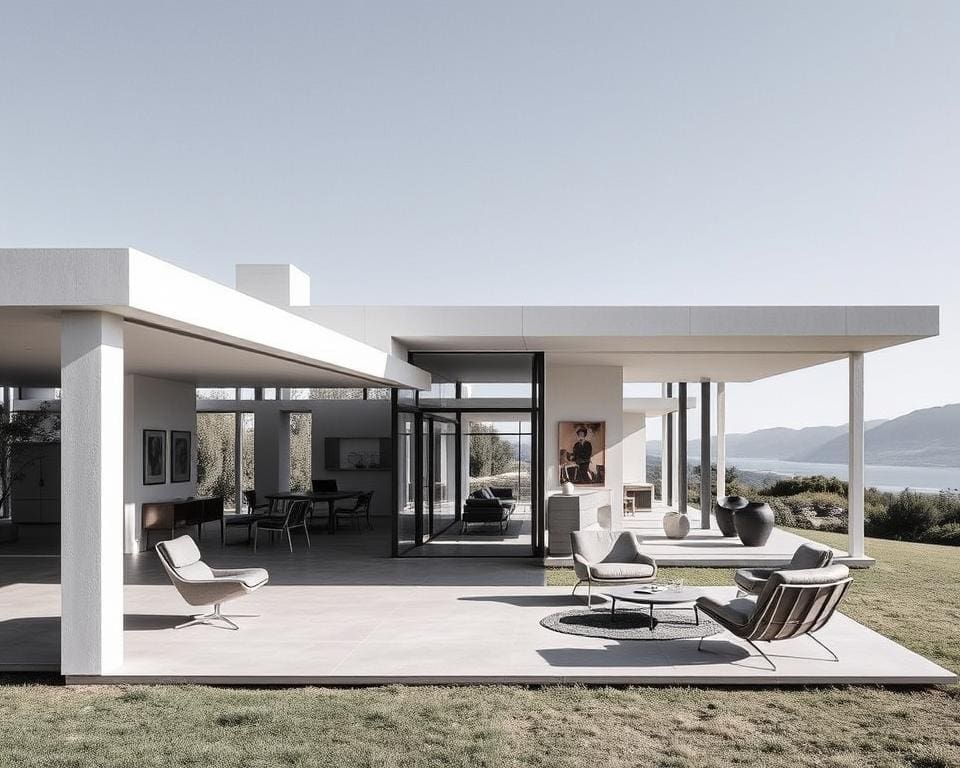Eileen Gray, the renowned modernist architect, was born in 1878 in County Wexford, Ireland. Her innovative designs and architectural masterpieces have left an indelible mark on the 20th century. Celebrated for her unique ability to blend functionality with aesthetics, Gray’s work shattered conventional architectural norms, introducing open spaces and flowing forms that resonate with a timeless touch. As an innovative designer, she carved out a significant place for herself within the bohemian circles of Paris, where her ideas flourished and evolved. Today, Eileen Gray’s legacy continues to inspire and challenge the boundaries of modern architecture and design.
The Legacy of Eileen Gray in Modern Architecture
Eileen Gray’s impact on modern architecture is profound, shaping the landscape of 20th century design with her innovative approaches. Her vision combined functionality and beauty, pioneering ideals that continue to inspire architects today. Recognised for her unique artistic flair, Gray’s architectural contributions introduced a new narrative within the modernism movement.
Influence on 20th Century Design
Throughout her career, Eileen Gray challenged traditional notions of design, advocating for a seamless integration of form and function. This shift created a foundation for the future of 20th century design. She experimented with various materials and forms, influencing countless contemporaries and later architects. Gray’s legacy can be seen in the emphasis on minimalism and the celebration of light and space, which resonates across generations.
Key Architectural Contributions
Among her notable works, the E-1027 house stands as a testament to her architectural prowess. This structure epitomises modern architecture with its innovative spatial design and use of materials that embrace simplicity and elegance. Eileen Gray’s architectural contributions extend beyond individual projects, inspiring a broader conversation about how modernism can harmonise with human experiences. Her designs laid the groundwork for a new architectural ethos that prioritises the unique relationship between space and its inhabitants.

Design Philosophy: The Intersection of Function and Aesthetics
Eileen Gray’s design philosophy intricately weaves together functionality and aesthetics, creating a harmonious balance that remains relevant today. This unique approach to architecture involves not only an understanding of the physical environment but also an appreciation for the emotional resonance of space. Her work exemplifies a delicate dance between form and purpose, encouraging both comfort and elegance.
Innovative Use of Materials
Gray’s pioneering spirit made her a trailblazer in employing innovative materials in her designs. She embraced glass and steel, which brought a sense of lightness and transparency to her constructions. These materials enhanced the usability of her spaces while simultaneously contributing to their visual allure. The incorporation of such materials is a hallmark of her work, reflecting her passion for modernism and her forward-thinking attitude toward design.
Minimalism and Modernism
In many of her projects, Gray embraced minimalism as a guiding principle. This approach stripped away unnecessary ornamentation, allowing the beauty of structure and space to shine through. Her designs resonate with modernist ideals, promoting simplicity and clarity. The result is an environment that feels open and airy, inviting nature’s light to enter and transform the space. Through minimalism, Gray’s architectural vision continues to inspire contemporary designers to prioritise function without sacrificing aesthetic appeal.
Eileen Gray: Modernist Architect with a Timeless Touch
Eileen Gray remains a remarkable figure in the realm of architecture, embodying the essence of a modernist architect with a timeless touch. Her work exudes a unique blend of creativity and functionality, making her an innovative designer whose influence is prevalent even today. Gray’s ability to harmonise form and space results in designs that resonate with contemporary values while retaining a sense of permanence.
Through her groundbreaking projects, Gray pushed the boundaries of architectural conventions. She seamlessly integrated modernist principles with diverse stylistic elements, showcasing her versatility and refusal to adhere strictly to traditional frameworks. This approach enabled her to create spaces that feel both avant-garde and enduring, marking her as a true pioneer in the modernist movement.
The impact of Eileen Gray’s work is not merely historical; it continues to inspire new generations of designers and architects. Individuals studying her portfolio encounter a legacy that is rich in innovation while grounded in an aesthetic that celebrates simplicity and elegance. Each of her creations stands as a testament to the fact that design can be both functional and artistically profound.
Iconic Furniture Pieces that Defined an Era
Eileen Gray’s contribution to the world of design extends beyond architecture, marking a significant impact with her iconic furniture. Each piece reflects her innovative spirit and commitment to aesthetics, setting trends that continue to influence modern design.
The Transat Chair: A Blend of Comfort and Style
The Transat Chair stands as a testament to Eileen Gray’s vision, merging comfort with a striking design. This chair features an adjustable backrest that caters to the user’s needs, allowing for a personalised experience. Crafted from durable materials, the Transat Chair embodies both functionality and the aesthetic appeal that defines iconic furniture.
The Bibendum Chair: A Statement of Elegance
In contrast, the Bibendum Chair captures attention through its whimsical and elegant design. Inspired by the Michelin Man, this chair showcases round, plush forms that invite conversation and admiration. Eileen Gray’s ability to create such playful sophistication solidifies the Bibendum Chair’s status as a classic within her collection.
The E-1027 House: A Masterpiece of Modernism
The E-1027 house, situated on the stunning French Riviera, epitomises Eileen Gray’s groundbreaking contributions to modernism. Completed in 1929, this architectural masterpiece showcases an innovative approach to living spaces through its unique design elements, such as open-plan layouts and extensive use of glass. This involvement of natural light and the breathtaking views of the sea create a harmonious blend of interior and exterior environments, reflecting Gray’s vision that sought to dissolve boundaries between nature and architecture.
Designed with a focus on functionality, the E-1027 house incorporates modular designs and flexible spaces, setting a new standard for modernist homes. Its sliding doors exemplify Gray’s forward-thinking principles, allowing inhabitants to adapt their living spaces according to their needs, thus creating a fluidity hitherto unseen in residential architecture. The house serves as a testament to how modernism can reimagine domesticity, breaking away from the rigid confines of conventional homes.
The E-1027 house continues to be celebrated as a seminal work in the discourse of modern architecture. Eileen Gray’s ability to marry aesthetic appeal with practicality not only cemented her legacy but also inspires contemporary designers. As an architectural masterpiece, the E-1027 house endures as a symbol of innovation, challenging us to rethink the relationship between our living spaces and the world around us.









